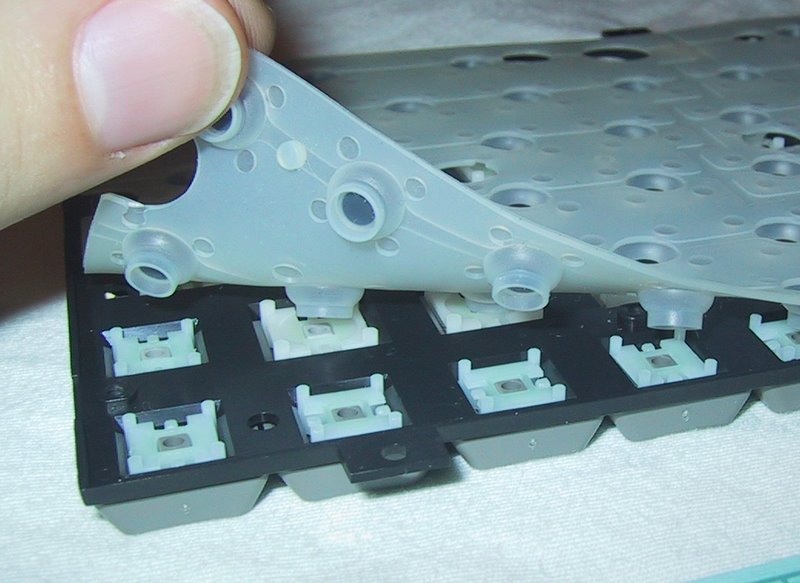Membrane Switches: A Budget-Friendly Solution for Contemporary Control Systems
Membrane Switches: A Budget-Friendly Solution for Contemporary Control Systems
Blog Article
Why Membrane Layer Changes Are Necessary for Durable Control Systems
Membrane layer switches play a crucial function in ensuring the resilience and reliability of control systems across different markets. Their one-of-a-kind building enables them to sustain tough ecological variables such as moisture, temperature level extremes, and physical wear. This durability not only prolongs the life expectancy of the systems they offer but additionally minimizes maintenance requirements. As we check out the diverse benefits of membrane layer buttons, it comes to be evident that their relevance transcends mere functionality, influencing customer experience and operational efficiency. What more implications do these qualities hold for the future of control system design?
Overview of Membrane Layer Buttons
Membrane switches are versatile and trustworthy parts commonly made use of in numerous electronic control systems. These switches are composed of a number of layers, including a graphic overlay, a spacer layer, and a published circuit layer. The visuals overlay offers both functional and visual design, while the spacer layer makes sure that the buttons are activated just when pressed. The published circuit layer has conductive traces that finish an electric circuit when the membrane is pushed, enabling the tool to react to individual inputs.
Membrane switches are often favored in applications needing a compact and light-weight design, making them perfect for portable devices, medical equipment, and industrial equipment. They can be tailored to meet specific user needs and can include various functions such as backlighting, tactile comments, and several shades. In addition, membrane layer switches are resistant to dust, wetness, and pollutants, making them suitable for environments where sturdiness is crucial.
Benefits of Sturdiness
In many applications, the resilience of membrane changes offers considerable advantages that enhance their total efficiency and dependability. These buttons are designed to withstand harsh atmospheres, making them ideal for usage sought after conditions such as high moisture, severe temperature levels, and exposure to chemicals. Their robust building assists to protect against damages from physical effect, making sure durable capability and reducing the need for regular substitutes.
Additionally, membrane layer buttons are immune to put on and tear, which is vital in applications where regular interaction happens. This sturdiness converts to reduce upkeep costs, as organizations gain from minimized downtime and fewer service disturbances. The encapsulated design of membrane changes secures interior parts from dirt and wetness ingress, more adding to their life expectancy (membrane switch).
Another advantage is their capability to maintain constant efficiency gradually. With a high tolerance for mechanical stress and anxiety, these buttons preserve their responsive responses and electric honesty, making certain individual contentment. Eventually, the resilience of membrane changes not only enhances functional effectiveness yet likewise promotes self-confidence in their reliability, making them a recommended choice for control systems throughout different sectors.
Applications in Different Industries
Durable control systems utilizing membrane buttons locate extensive applications across a variety of markets, each taking advantage of the unique features these switches supply. In the clinical industry, membrane layer buttons are crucial for gadgets such as client monitors and analysis equipment, where reliability and ease of cleaning are vital. Their resistance to dampness and impurities ensures they keep capability in sterile environments.
The automobile market leverages membrane layer switches for dashboard controls and infotainment systems, where they offer sleek, low-profile interfaces that enhance individual experience. These buttons are likewise designed to withstand extreme conditions, including exposure to more tips here extreme temperatures and resonances.
In commercial settings, membrane buttons are frequently utilized in machinery control panels, supplying tactile feedback and toughness needed for high-usage applications. Their capability to resist chemicals makes them ideal for manufacturing atmospheres where spills and contaminants are frequent.

Consumer electronic devices, such as kitchen area appliances and remote controls, also utilize membrane layer switches for their flexibility and cost-effectiveness. On the whole, the flexibility and robust nature of membrane changes make them vital throughout various fields, making sure reliable operation and long life in control systems.
Style and Aesthetic Charm
While performance is paramount, the style and aesthetic appeal of control systems furnished with membrane buttons play an essential duty in user engagement and total experience (membrane switch). The visual style of these switches can considerably influence individual understanding and interaction. A well-designed membrane switch boosts the good looks of the gadget, making it extra appealing to individuals and fostering a link in between the user and the item
Membrane changes provide a good deal of versatility in layout, permitting manufacturers to personalize graphics, shades, and appearances to align with brand name identity and item aesthetics. Using lively shades and distinctive patterns can attract attention, while tactile responses can reinforce the user's communication with the tool. In addition, the capacity to integrate LED indicators and backlighting right into more information the membrane layer button style gives both functional and aesthetic advantages, improving exposure and usability in numerous settings.

Enhancing User Experience

In addition, membrane switches can be tailored to include visual user interfaces, improving usability by offering details in a clear and intuitive fashion (membrane switch). This customization can include symbols, labels, and color coding that overview customers with complex performances with convenience. In addition, their flexibility permits integration in numerous settings, guaranteeing regular efficiency whether in commercial equipment or consumer electronics
The sturdiness of membrane layer switches likewise plays a critical function in user experience. By withstanding rough problems and extended usage, these switches lower the likelihood of system failures, therefore advertising reliability and individual self-confidence. Inevitably, the strategic use of membrane layer switches over not just elevates performance yet likewise substantially enriches customer interaction with control systems, making them an important component in modern-day design.
Final Thought

Report this page